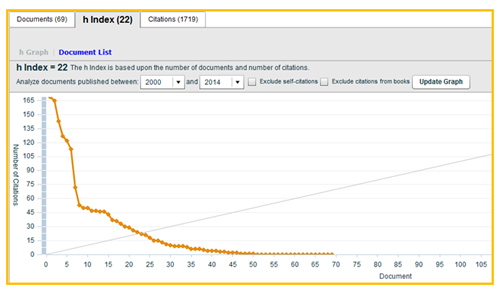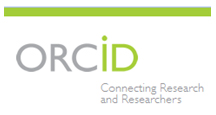RESEARCHER CORNER
- Finding h-index and Managing Citation Information
- It was developed by J.E. Hirsch to qualify the impact and quantity of individual author research output.
- It is indicated by a horizontal line going through the Year / Total Year columns. The number of items above this line, which is "h" have at least "h" citations.

h-index can be used to measure the research performance of a single author, multiple authors, or selected documents. ResearcherID, Scopus Author ID and ORCID help you showcase your publications and establish your research network.
For example, an h-index of 22 means there are 22 items that have 22 citations or more. This metric is useful because it discounts the disproportionate weight of highly cited papers or papers that have not yet been cited.
![]()
Author who registered and participates in ResearcherID is assigned a unique identifier. The ID enables authors to manage their publication lists, track their times cited counts and h-index, identify potential collaborators and avoid author misidentification.
![]()
Each author in Scopus is assigned a unique number and grouping together all of the documents written by that author. If authors find any discrepancies on their publications list, they can submit their “Request corrections to author details”.

ORCID provides a persistent digital identifier for individual researchers. Authors can enhance their research profile by associating an ORCID account with ResearcherID and AuthorID.


